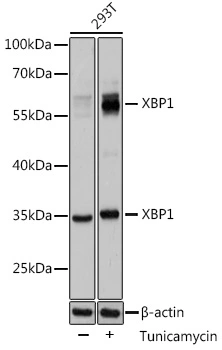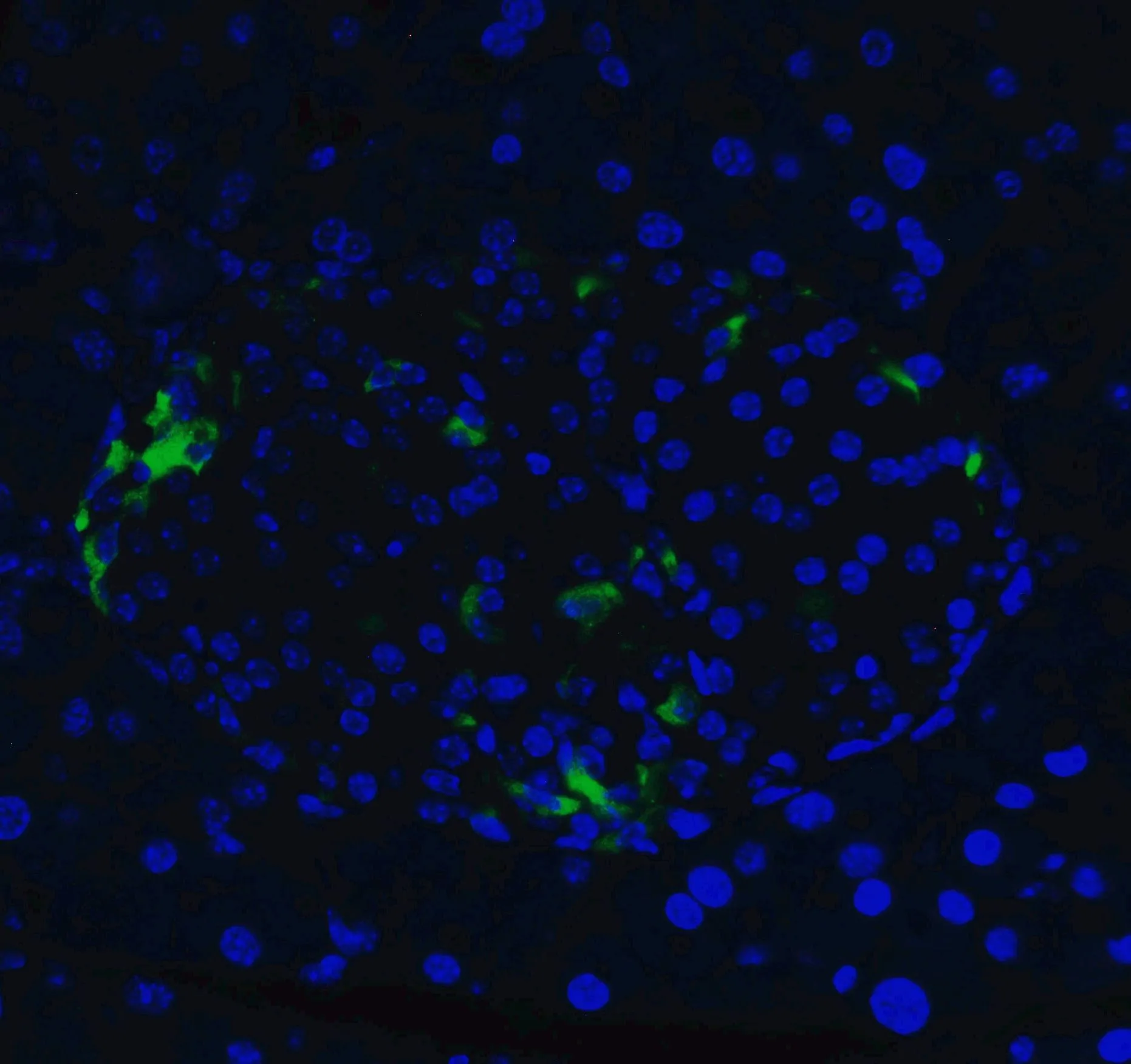
IHC-P analysis of 4% paraformaldehyde-fixed mouse pancreas tissue using GTX31293 XBP1 antibody. Dilution : 20 microg/ml Green : Primary antibody Blue : DAPI
XBP1 antibody
GTX31293
ApplicationsImmunoFluorescence, Western Blot, ELISA, ImmunoCytoChemistry, ImmunoHistoChemistry, ImmunoHistoChemistry Paraffin
Product group Antibodies
TargetXBP1
Overview
- SupplierGeneTex
- Product NameXBP1 antibody
- Delivery Days Customer9
- Application Supplier NoteWB: 0.25-2 microg/mL. ICC/IF: 10-20 microg/mL. IHC-P: 1-5 microg/mL. *Optimal dilutions/concentrations should be determined by the researcher.Not tested in other applications.
- ApplicationsImmunoFluorescence, Western Blot, ELISA, ImmunoCytoChemistry, ImmunoHistoChemistry, ImmunoHistoChemistry Paraffin
- CertificationResearch Use Only
- ClonalityPolyclonal
- Concentration1 mg/ml
- ConjugateUnconjugated
- Gene ID7494
- Target nameXBP1
- Target descriptionX-box binding protein 1
- Target synonymsTREB-5, TREB5, XBP-1, XBP2, X-box-binding protein 1, tax-responsive element-binding protein 5
- HostRabbit
- IsotypeIgG
- Protein IDP17861
- Protein NameX-box-binding protein 1
- Scientific DescriptionThis gene encodes a transcription factor that regulates MHC class II genes by binding to a promoter element referred to as an X box. This gene product is a bZIP protein, which was also identified as a cellular transcription factor that binds to an enhancer in the promoter of the T cell leukemia virus type 1 promoter. It may increase expression of viral proteins by acting as the DNA binding partner of a viral transactivator. It has been found that upon accumulation of unfolded proteins in the endoplasmic reticulum (ER), the mRNA of this gene is processed to an active form by an unconventional splicing mechanism that is mediated by the endonuclease inositol-requiring enzyme 1 (IRE1). The resulting loss of 26 nt from the spliced mRNA causes a frame-shift and an isoform XBP1(S), which is the functionally active transcription factor. The isoform encoded by the unspliced mRNA, XBP1(U), is constitutively expressed, and thought to function as a negative feedback regulator of XBP1(S), which shu
- Storage Instruction-20°C or -80°C,2°C to 8°C
- UNSPSC12352203

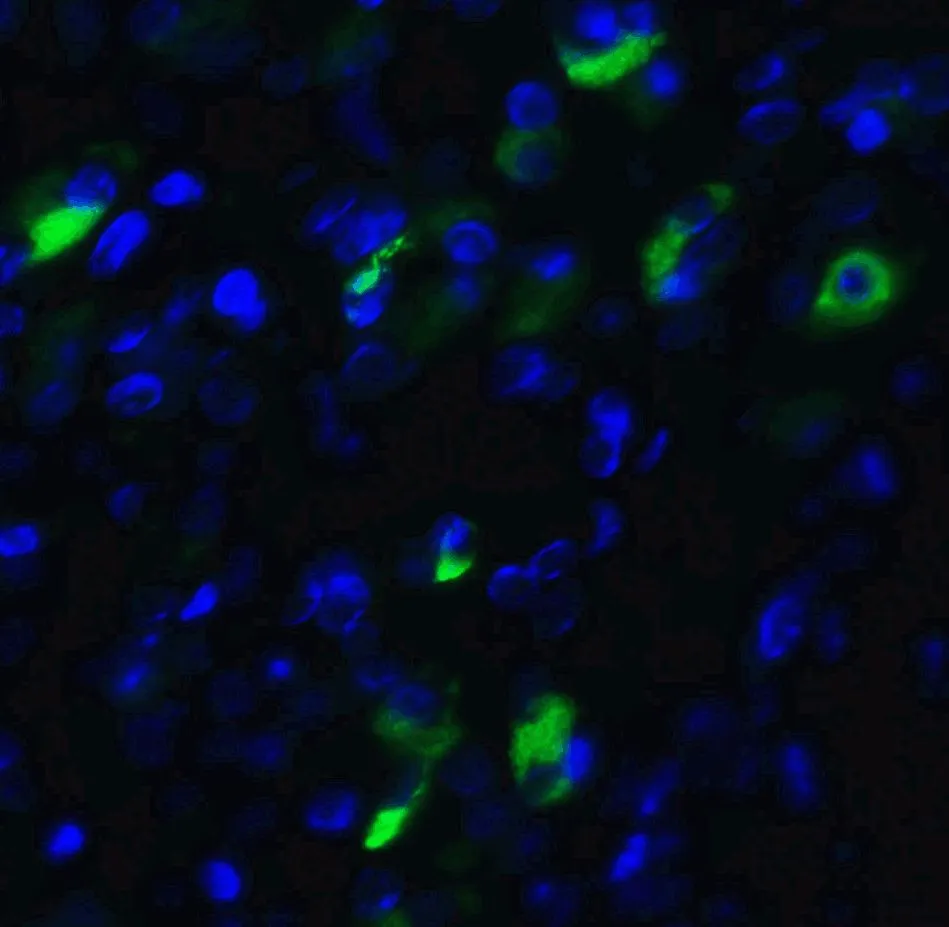
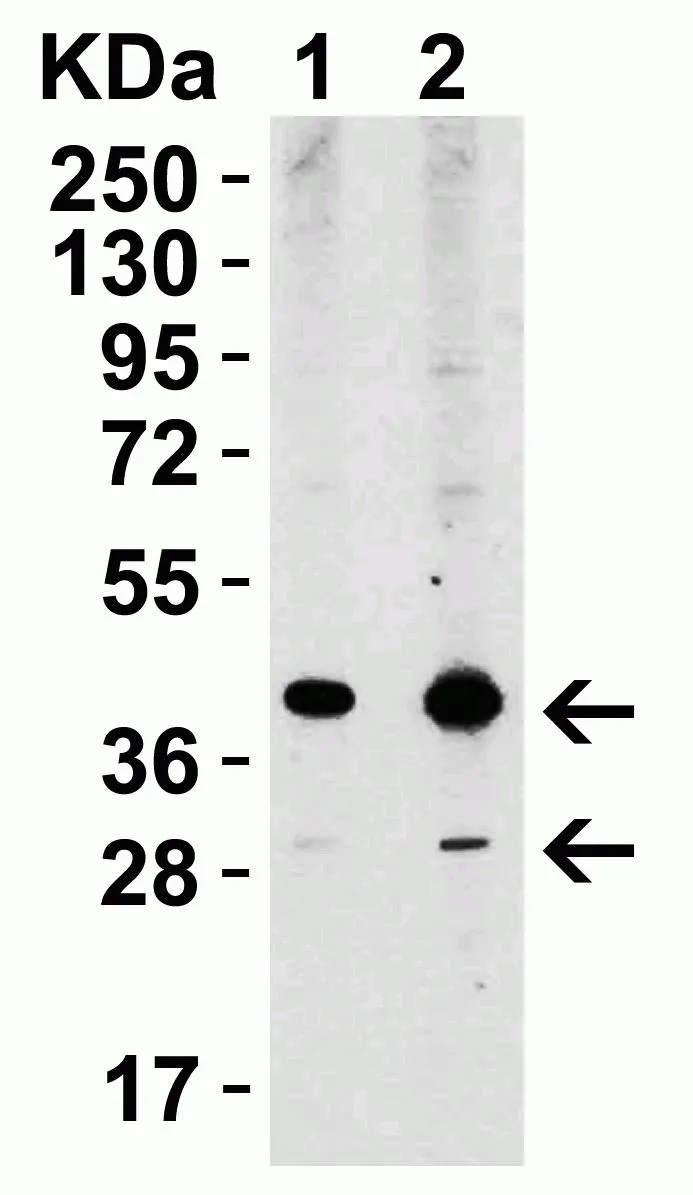
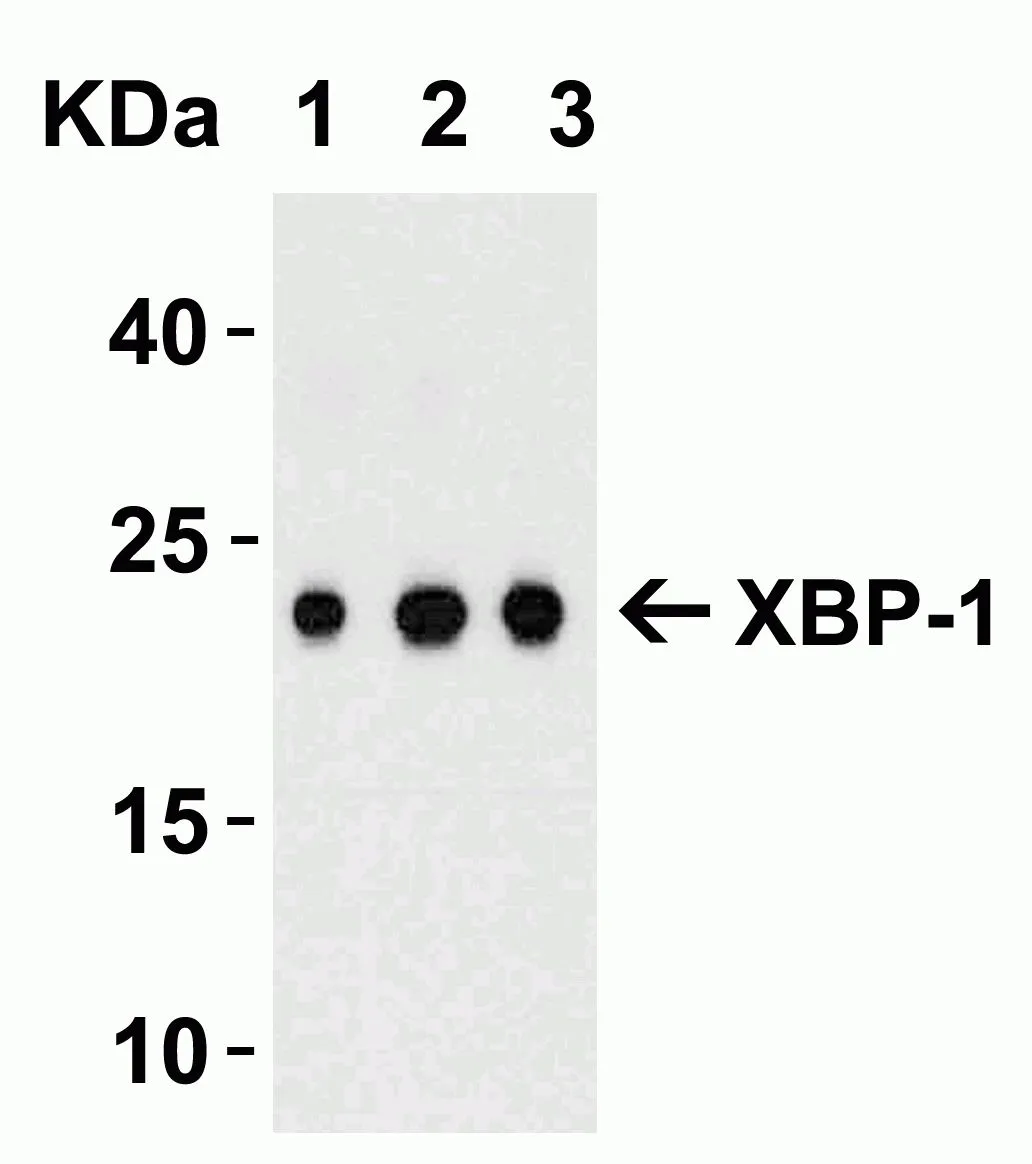
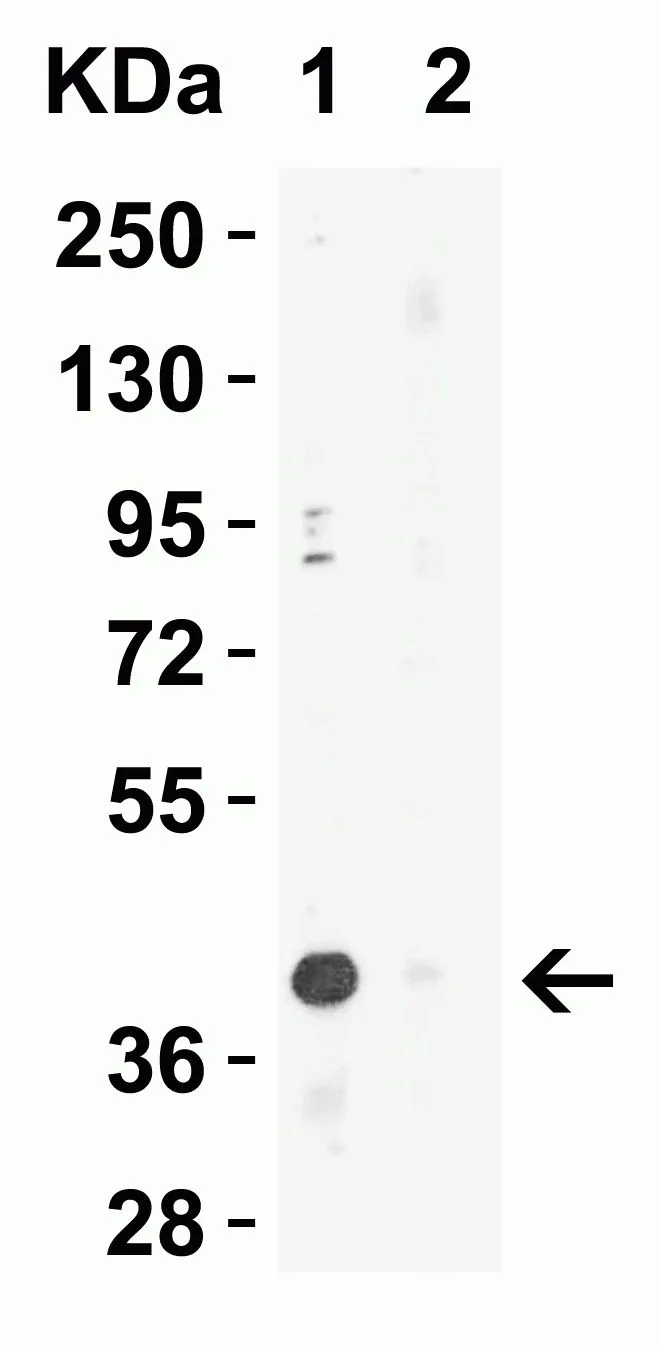
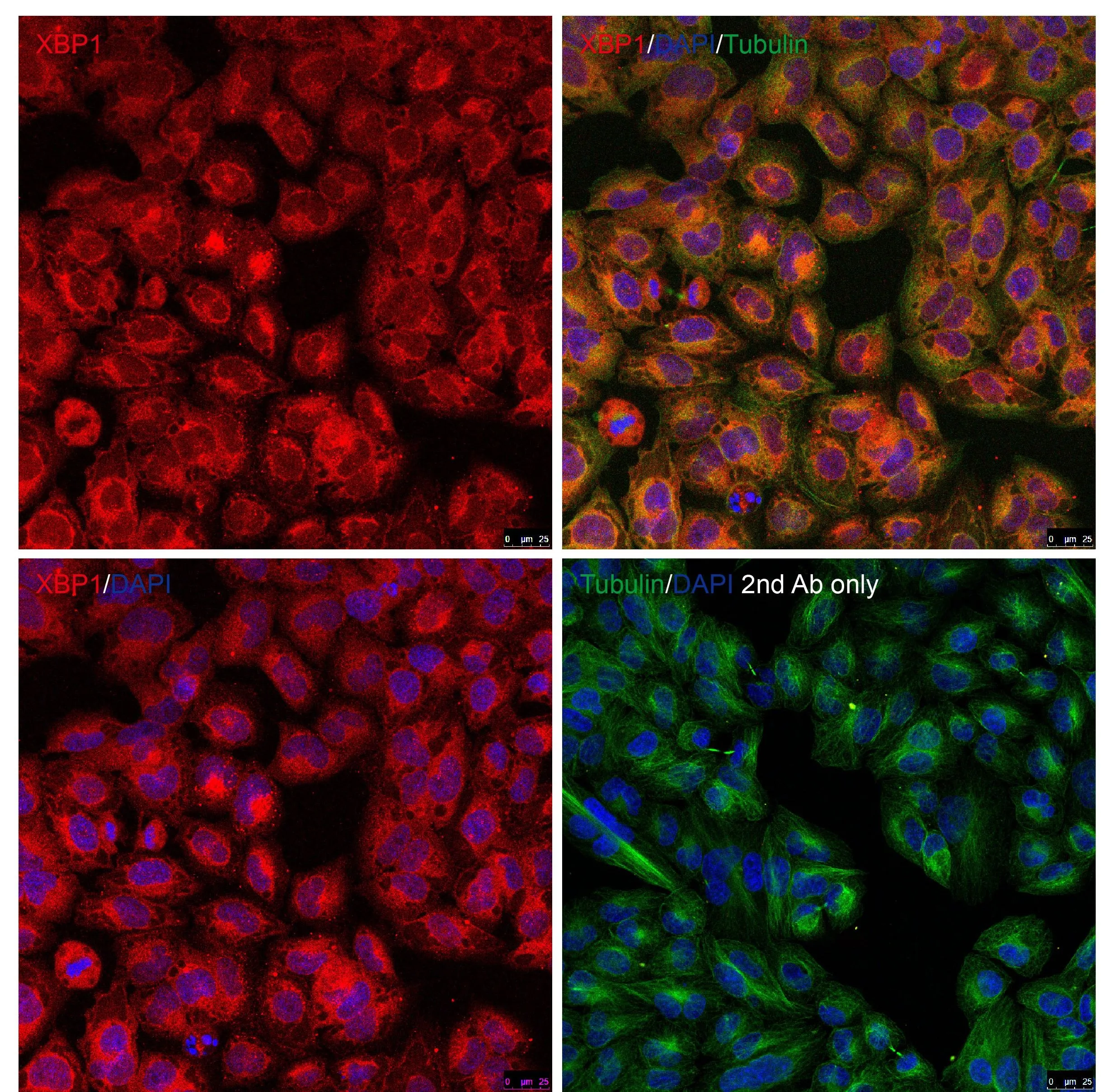
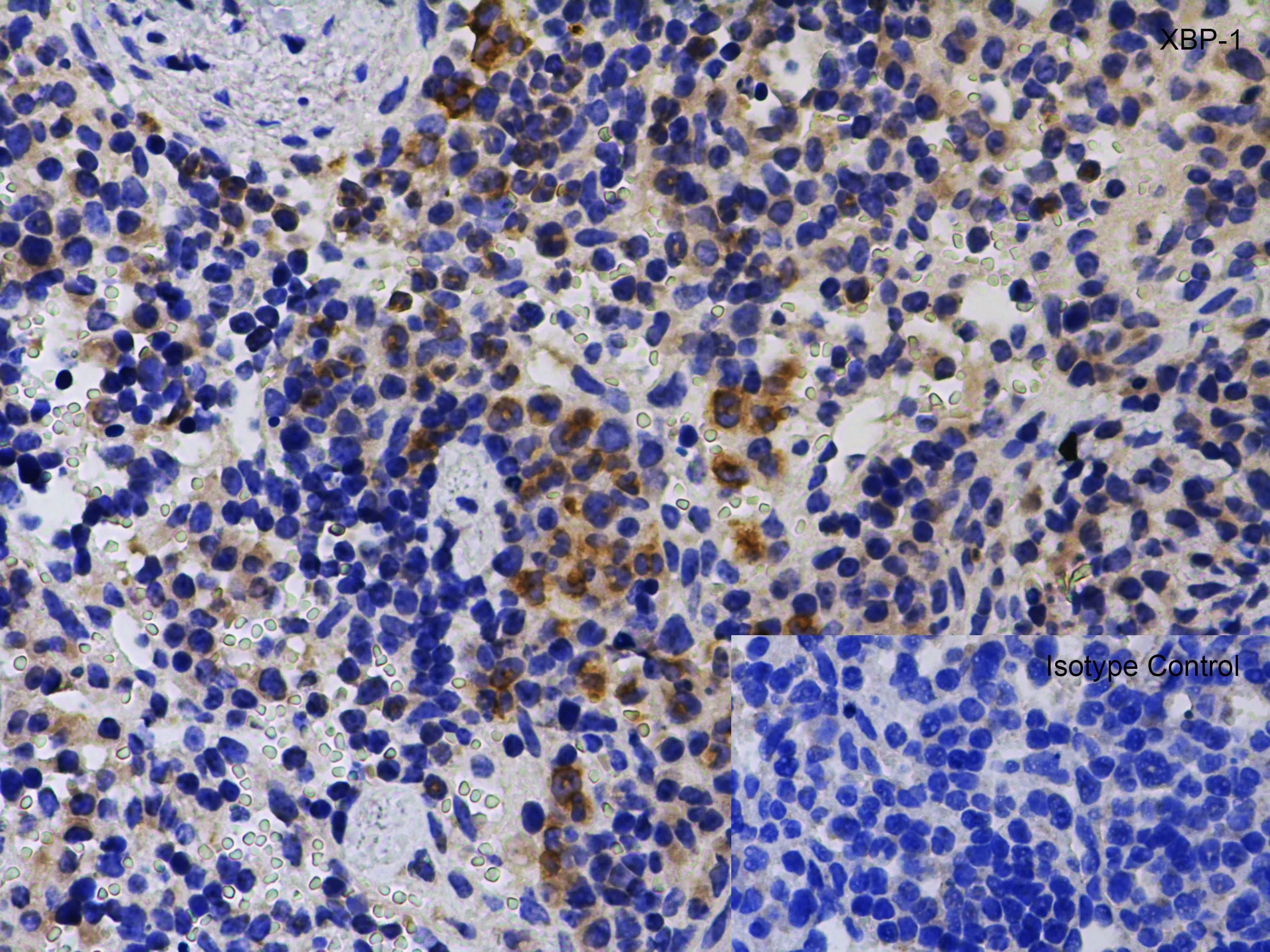
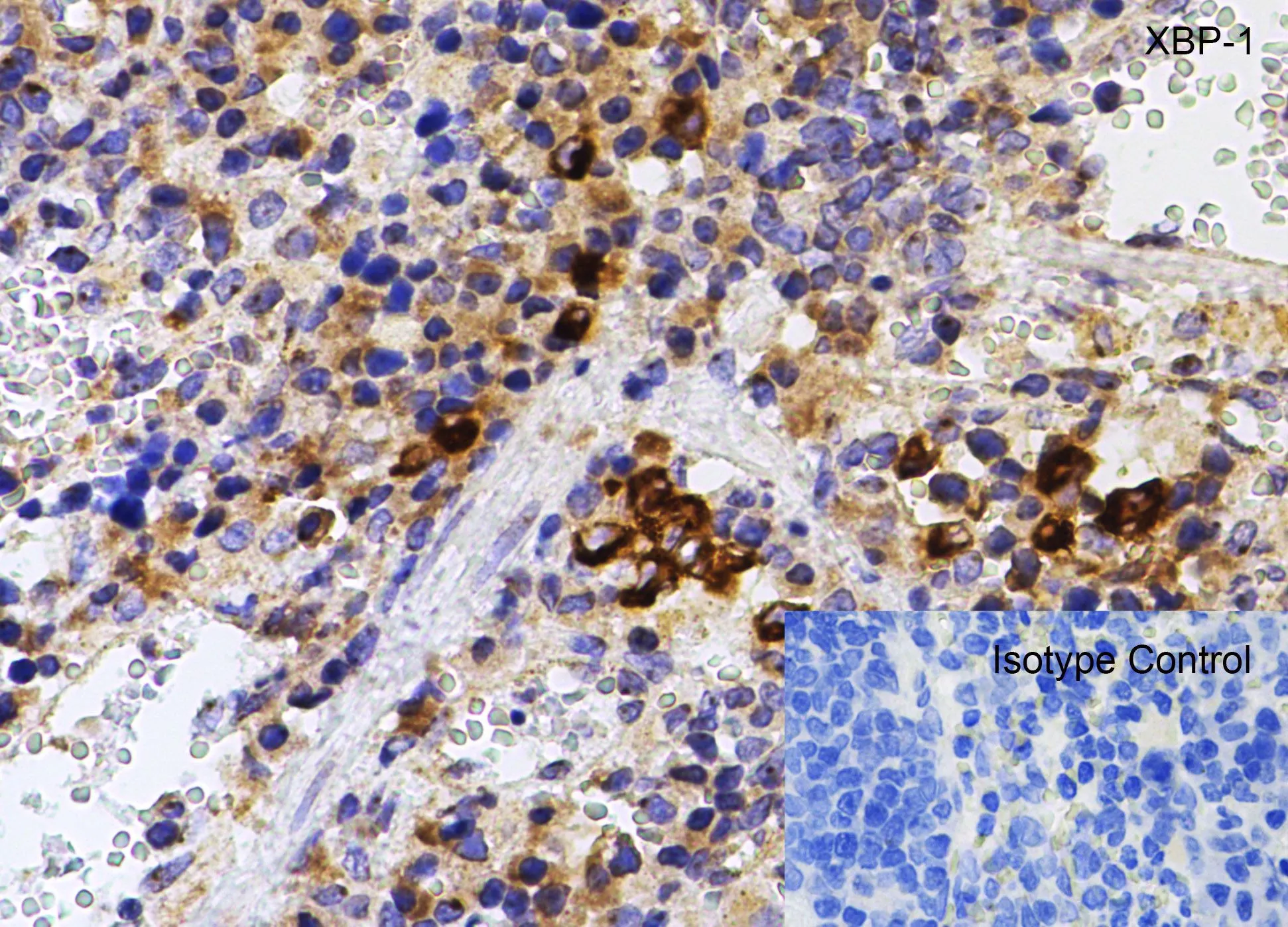

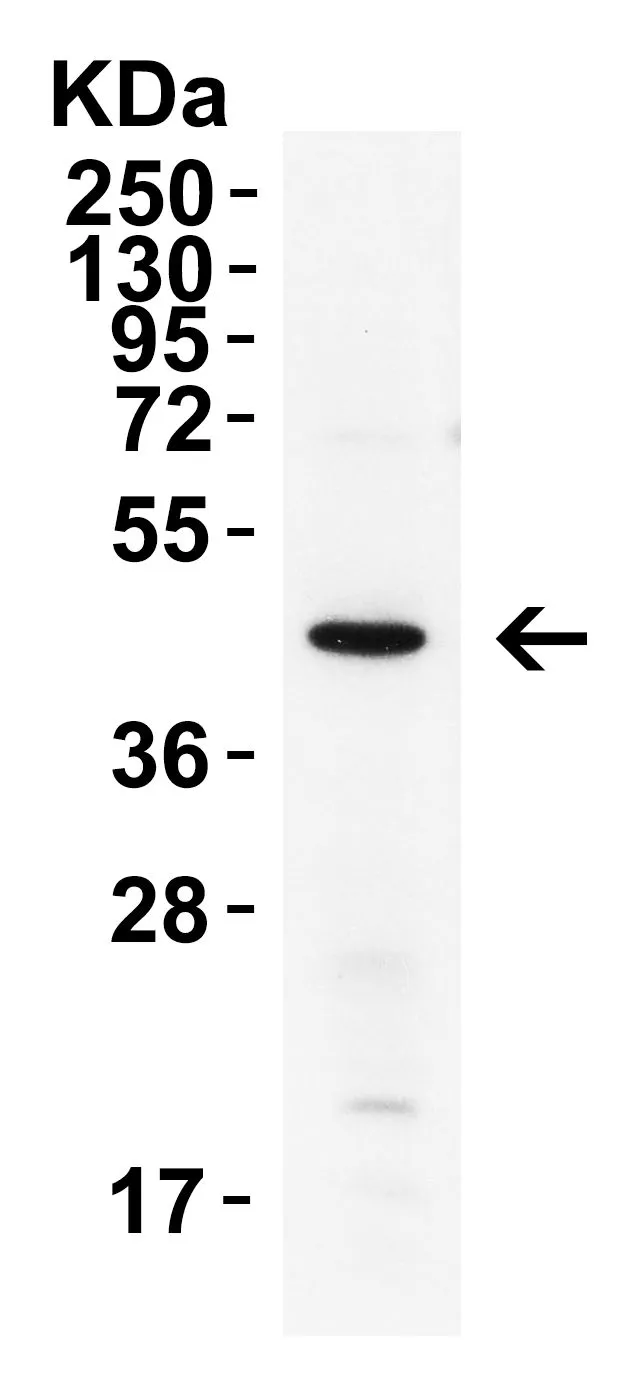
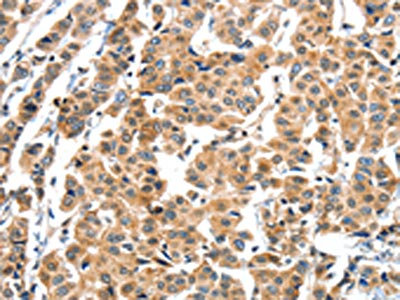
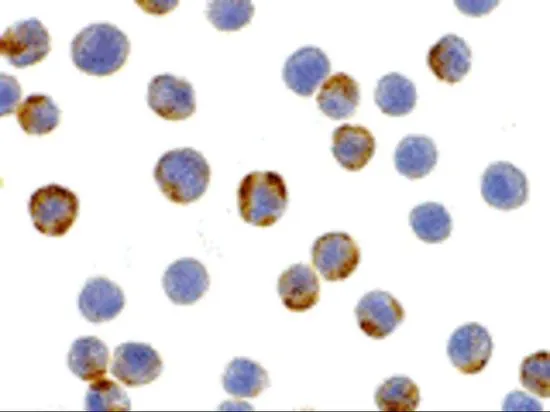
![WB analysis of XBP1(AA: 1-160)-hIgGFc transfected HEK293 cell lysate using GTX83279 XBP1 antibody [1C4].](https://www.genetex.com/upload/website/prouct_img/normal/GTX83279/GTX83279_20170912_WB_w_23061322_946.webp)

